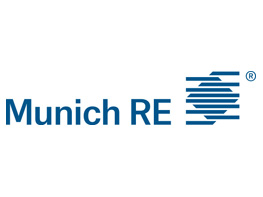Strategy Shift: Rethinking Recruitment Approaches Amid a Changing Job Market
For the past few years, we’ve heard that insurance and risk management has been gaining momentum in terms of attracting young professionals. But is that still the case amid recent reorganizations and layoffs?
Despite the grim headlines of staff layoffs at both established (GEICO, Liberty Mutual) and startup (Hippo, Pie Insurance) P&C firms, students remain resolute in their pursuit of industry careers. In fact, traditional P&C roles such as actuary, underwriter and broker ranked as the top three industry job functions students are pursuing in the 2023 Recruiting Survey Report conducted by Gamma Iota Sigma (GIS).
What is changing, however, are the expectations students have for the insurers they choose. Today’s young professionals want to pursue versatile roles where they can apply diverse skill sets throughout their career, and they will gravitate toward insurers that offer them such opportunities.
Let’s look at the overall market trends and explore how insurers can shift their talent strategies to meet students’ desires.
Downturn or Rebound?
Recent data indicates that fourth quarter 2023 layoffs may have been a temporary speed bump and not an indicator of long-term employment shrinkage. While hiring slowed from 3,900 industry jobs in September 2023 to 1,100 in October, it bounced back up to 1,500 in November, according to the U.S. Bureau of Labor Statistics. The total number of industry jobs stood at 2.95 million at the end of November, up from 2.92 million at the same time in 2022.
Even more encouraging, AM Best believes the recent layoffs were due to the cyclical nature of the business, and not because artificial intelligence is replacing human jobs. That means young professionals remain in demand.
Our data at GIS backs up AM Best’s perspective. We’ve seen year-over-year growth in engagement and support from HR and talent acquisition teams, signifying a strong industry appetite for hiring entry-level talent. We’re also seeing an increase in the number of academic programs offering risk management and insurance-related curricula, which reflects students’ continuing desire to seek out industry careers.
Connecting Employer’s Needs with Students’ Expectations
Ask students why they’re seeking insurance career opportunities, and you might be surprised by the answer. In the 2023 GIS Recruitment Survey, the top reason wasn’t earning potential or job stability. Instead, it was the opportunity to seek a multifaceted career.
Simultaneously, we’re seeing students take more diverse paths into our industry than in the past. Slightly more than half (56%) of students are following traditional risk management or actuarial science degree paths. But more than 30% are studying adjacent majors, including finance and data science.
Because students are diversifying their areas of study, it increases the likelihood that insurers will find young professionals who exhibit the very skill sets their organizations need the most. These include soft skills such as communication, teamwork, problem-solving capabilities and high levels of emotional intelligence. Insurers are also seeking students who will pursue professional designations and actively participate in industry events. And they’re quick to hire candidates with proven leadership background and potential.
How to Attract Top Entry-Level Talent Today
Young professionals will naturally gravitate to insurers that position themselves as attractive, stable employers capable of delivering the multifaceted career experience they expect. Three ways to make this happen:
1) Provide meaningful work. Young professionals aren’t just interested in making a living. They also want to make a difference in people’s lives. Our industry gives them an incredible opportunity to do just that. Insurers should seek ways to offer entry-level workers challenging and engaging projects that contribute to their company’s mission and have a tangible impact on their communities.
2) Work with them. GIS data suggests that there is significant work to be done in reaching students who aren’t aware of insurance careers. Providing access to internships remains the best way for employers to make this happen. Internships also allow employers to create strong bonds with potential hires. More than half (55%) of interns say they will return to the same employer for another internship or full-time equivalent position after their internship ends.
Insurers should also find ways to offer mentorship opportunities to young professionals. A majority (77%) of students say that mentorship is extremely important to them, and 46% have had a mentor in the past.
3) Invest in your corporate culture. One-third of students told GIS that corporate culture is the biggest differentiator from one company to another, more so than industry segment or reputation. Two elements of culture that students weight the most are an insurer’s environmental, social and governance (ESG) goals and its diversity, equity and inclusion (DEI) commitments.
When it comes to ESG, students are emphasizing the “E” the most; 40% say they evaluate an insurer based on its commitment to climate change. Another 39% of students say they’d take a lower salary to work for a company prioritizing ESG.
When it comes to DEI, we’re seeing students rank insurers based on a variety of factors. These include fair recruiting practices, diversity in leadership and commitment to DEI throughout all levels of the organization. Young professionals also want to work for insurers who offer employee resource groups that can help them develop a stronger sense of belonging.
Shift and Thrive in 2024
While industry layoffs always bring a level of concern, they haven’t shaken students’ view of insurance as a stable and desirable career path. Insurers who understand the unique needs of today’s students and invest in the culture changes necessary to attract and retain them will stand the best chance of creating a productive and engaged workforce in 2024 and beyond. &










